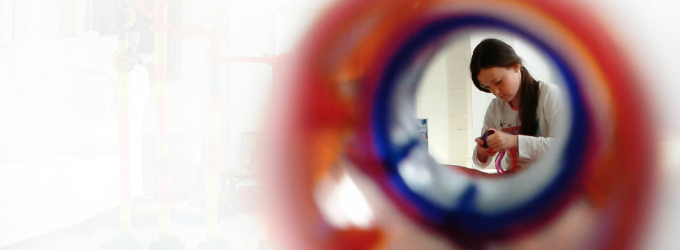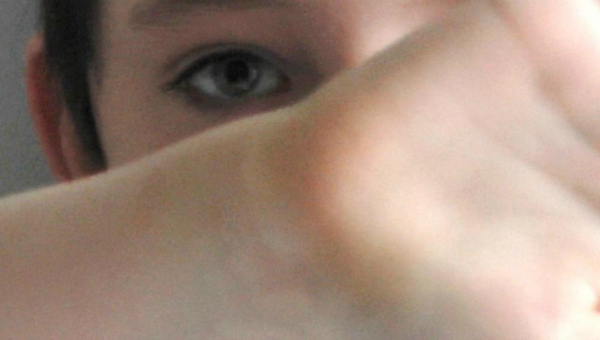 In November 2012 I sat right next to Mark Cousins (I know!) in a smart dining room at Trinity College while he chatted and told us all about his new project. It would be an exploration of how children have been portrayed in film, and how they behave on screen. He would take his characteristically broad sweep of global cinema.
In November 2012 I sat right next to Mark Cousins (I know!) in a smart dining room at Trinity College while he chatted and told us all about his new project. It would be an exploration of how children have been portrayed in film, and how they behave on screen. He would take his characteristically broad sweep of global cinema.
Less than a year later, I watched the finished piece on the last night of the Cambridge Film Festival. It struck me as being a perfect place in the schedule for one of Mark Cousins’ contemplative films: I don’t think it’s possible to come away from his work without an insatiable desire to read/research/watch many of the points he raises. At the end of the festival there is time think about A STORY OF CHILDREN AND FILM without being distracted by other festival goodies.
To set the scene before the show, Toby Miller chatted to Neil McGlone, who worked with Cousins as his film researcher (what a job!). Neil explained that Cousins had filmed his nephew Ben and niece Laura playing together during a visit to his Edinburgh flat, capturing their initial shyness with the camera, then their playfulness, an argument, laughter; children’s changing moods and emotions would be the focus of this work. Over three or so months, Neil’s work entailed sourcing Mark’s chosen films with a child protagonist that focused on the child’s emotions; throughout the development period, they didn’t stray too far from Mark’s original idea.
“desire + impotence = stroppiness”
The mantra of A STORY OF CHILDREN AND FILM is, to quote Mark Cousins, “looking closely at a small thing”; while that’s true, it also reveals much about the bigger picture of families and relationships, wherever they are. ASOCAF immediately sets out its international stall, with the title translated into multiple languages. Cousins’ camera takes the viewer into the St Remy sanatorium where Van Gogh convalesced in the 1889; he then fills the screen with Van Gogh’s paintings, presenting them in magnificent detail. The emphasis on Van Gogh’s introspective style is mirrored through Cousins’ style of presentation, allowing an unusually long time to view the paintings and encouraging us to not only examine the physical painting but also their reflective, expressive nature, which in turn dictates the film’s principal mood.
The loose organising themes are wariness (inspired by niece Laura’s first cagey reaction to being filmed); the strop (“desire + impotence = stroppiness”); loneliness and loss; parenting, when the child must become the parent; storytelling; class structures and restrictions; destructiveness; adventure. It’s childhood in a nutshell. Even with such emotional subject matter, Mark Cousins avoids sentimentality; he’s chosen work from directors who are adept at being tender without being soppy, of appearing to suspend the adult eye while the camera is on the child.
Mark Cousins draws us in to thinking in new ways, making new connections, certainly making long lists of must-have DVDs.
There are plenty of real treats here, from Ozu’s trademark use of low angles and head to toe framing, which makes the viewer feel child-sized, to the fantasy of ET and the more gritty KES; there’s the wonderful Japanese director Hirokazu Kore-eda’s I WISH (2011) and NO ONE KNOWS (2004). The work of women directors working with children is especially interesting. Danish director Astrid Henning Jensen’s PALLE ALONE IN THE WORLD (1949) tells the story of a little boy who wakes up to find himself totally alone, which gives him a chance to live out his dreams by driving trams and flying spaceships. There are clips from beguiling Albanian films TOMKA AND HIS FRIENDS (1977) and THE NEWEST CITY IN THE WORLD (1974), and the somewhat alarming 1978 Soviet short TEN MINUTES OLDER, directed by Herz Frank. Here the camera examines in brutal close-up the face of a very little boy, aged maybe three or four, as he watches a story unfold; he cries, he smiles, he’s wary, it’s very moving. I was captivated by a clip from J Lee-Thompson’s 1953 film THE YELLOW BALLOON, set in war-ravaged London; a young boy is involved in an accident in which his friend dies, and his guilt leads to him being exploited by a criminal. Delightfully, while searching at home I found it within an unopened box set of The London Collection – next weekend is sorted.
A STORY OF CHILDREN AND FILM is a blissful way to spend 100 minutes: Mark Cousins’ lyrical narration draws us in to thinking in new ways, making new connections, certainly making long lists of must-have DVDs. It’s a rich and sensitive cine-essay on childhood that we can all identify with. As the film draws to an end, Cousins sums up: ‘Cinema itself is a child, it’s very young for an art form’, which is a pretty exciting idea. His own childlike joy in the camera is manifest throughout A STORY OF CHILDREN AND FILM, in playing with it, using it to express love, loss and loneliness, being adventurous and bold, being awkward and shy. I didn’t want ASOCAF to finish. And with those thoughts, my Cambridge Film Festival drew to a fitting end. But wait: that to-watch list is growing before my very eyes…
httpvh://youtu.be/XqvJFseb5nI


5 thoughts on “A Story of Children and Film”
Comments are closed.